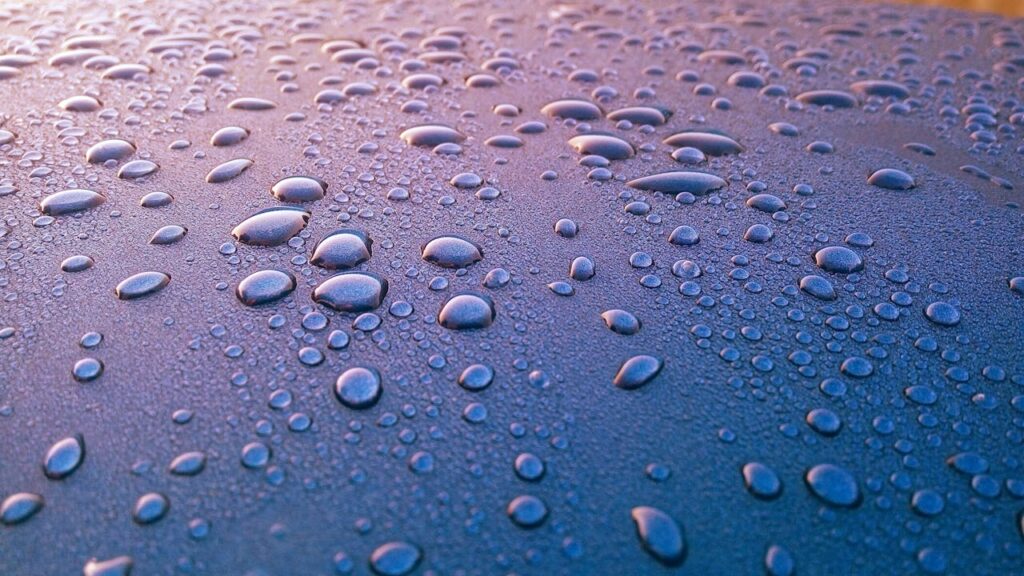
Explore & Play
Discover interesting topics and solve the accompanying crossword puzzle.
Liquid Crossword | Importance of Liquids in Everyday Life
Table of Contents
Welcome to our blog post! We invite you to start by tackling our Liquid crossword puzzle, which is designed to spark your curiosity about the fascinating world of liquids. Feel free to solve the crossword first and then dive into the detailed article that follows to enhance your understanding. Alternatively, if you’re new to the topic or want to build your knowledge first, you can read the article and return to the crossword later to test what you’ve learned. Enjoy the journey through the essential role of liquids in everyday life!
Liquid Crossword
You can either fill in the crossword puzzle directly on this page or click the button in the bottom right corner to print it for free.

The Role of Liquids in Everyday Life
Have you ever stopped to consider just how many different liquids you encounter daily? From the water we drink to the ink in our pens, liquids are central to our lives in ways we often take for granted. Each liquid has its own purpose, whether it’s vital to our survival, fuels our transportation, or simply enhances our culinary experiences. In this article, we will explore the wide-ranging roles of liquids in everyday life, inspired by a crossword puzzle filled with fascinating terms related to liquids.
1. Liquids Essential to Life
1.1 Water: The Basis of All Life
No liquid is more crucial to life on Earth than water. It covers approximately 71% of the planet’s surface and is essential for every living organism. From the deep oceans to the shallow puddles that form after rain, water is all around us. Beyond its environmental role, water hydrates our bodies and sustains plant life. Even seawater, though not drinkable, plays an essential role in regulating climate and supporting marine ecosystems. Another fascinating form of water is dew, which appears as tiny droplets on grass in the early morning. These variations in water forms show just how dynamic and life-sustaining this liquid can be.
1.2 Blood: The Life Force of the Body
Another liquid constantly at work within us is blood. This incredible substance circulates oxygen and nutrients throughout our body, ensuring that every cell receives the essentials for survival. But blood isn’t working alone. Sweat, produced by the skin during exercise or heat, helps regulate body temperature through evaporation. Saliva, produced in the mouth, aids digestion, while bile—secreted by the liver—helps break down fats in our food. Plasma, the clear part of the blood, carries hormones, nutrients, and waste products, demonstrating how interconnected these bodily fluids are.
1.3 Milk: Nourishment from Birth
From the moment we are born, milk plays a key role in providing nourishment. This nutrient-rich liquid is produced by mammals and contains the perfect balance of fats, proteins, and sugars for young infants. Beyond infancy, milk continues to serve as a source of nutrition for many, offering calcium and vitamins necessary for healthy bones and teeth. Whether it’s added to coffee or poured over cereal, milk remains a staple in many households around the world.
1.4 Juice and Nectar: Nature’s Sweet Liquids
Nature provides its own sweet liquids in the form of juice and nectar. Juice, often extracted from fruits and vegetables, is rich in vitamins and antioxidants, making it a popular beverage for health-conscious individuals. Meanwhile, nectar is a sugary liquid produced by flowers that attracts bees and other pollinators. These tiny creatures transform nectar into honey, another sweet liquid cherished for its flavor and medicinal properties. Both juice and nectar highlight how natural liquids contribute to our diet and the delicate balance of ecosystems.
2. Liquids in Our Kitchens and Dining Rooms
2.1 Beverages We Love: Tea, Coffee, Wine, and Whiskey
Our daily routines and celebrations are often filled with beloved liquids. Whether it’s a warm cup of tea or coffee to start the day or a glass of wine or whiskey to wind down in the evening, these beverages bring comfort and joy. Tea and coffee, both brewed from natural ingredients, offer caffeine that helps us stay alert. Wine and whiskey, on the other hand, are often enjoyed during social gatherings. Champagne, with its sparkling bubbles, adds a sense of festivity to special occasions, reminding us that liquids can carry cultural significance.
2.2 Broth and Soup: Comfort in a Bowl
There’s nothing like a warm bowl of broth to soothe the soul. Made by simmering bones or vegetables, broth forms the base of countless soups around the world. Rich in nutrients and flavor, this clear liquid provides both nourishment and warmth, particularly in colder months. Broth exemplifies how simple liquids can be transformed into meals that offer both comfort and sustenance.
2.3 Syrup and Honey: Sweet Additions
Some liquids are best known for their sweetness. Syrup, often poured over pancakes or waffles, adds a thick, sugary layer to breakfast foods. Honey, produced by bees, offers a natural alternative to processed sugars, bringing a floral sweetness to teas, desserts, and even savory dishes. These sticky liquids, though small in quantity, have a big impact on flavor.
2.4 Vinegar: More Than Just a Condiment
Vinegar is one of the most versatile liquids in the kitchen. Known for its sharp, acidic taste, vinegar is used to add tang to dishes, preserve foods through pickling, and even clean surfaces. Its ability to act as both a culinary and household staple speaks to the diversity of liquid applications. Vinegar’s acidic nature also makes it an essential ingredient in chemical reactions, such as the fermentation process that produces wine and other alcoholic beverages.
3. Industrial Liquids: Powering Our World
3.1 Gasoline and Oil: Fueling Transportation
Some of the most important liquids in modern society are those that power our vehicles. Gasoline and oil, both derived from petroleum, serve as the lifeblood of cars, airplanes, and ships. Gasoline ignites within engines, providing the energy needed for motion, while oil lubricates moving parts to ensure smooth operation. These liquids not only keep our transportation systems running but also play a critical role in global economies.
3.2 Ink and Paint: Creativity in Liquid Form
Art and communication depend on certain liquids as well. Ink, used in pens and printers, enables us to write, draw, and record information. Inkjet technology, which sprays tiny droplets of ink onto paper, is a marvel of modern engineering. Similarly, paint—a liquid applied to surfaces for decoration—allows artists to express creativity and designers to enhance the aesthetics of homes, buildings, and public spaces.
3.3 Detergents and Soap: Keeping Things Clean
Cleaning relies on liquids, especially detergents and soap. These substances break down oils, dirt, and bacteria, helping to maintain hygiene in homes, hospitals, and industries. Whether you’re washing dishes or scrubbing surfaces, detergent plays an essential role in keeping our surroundings clean and safe. Soap, a more traditional liquid cleanser, has been used for centuries for personal hygiene, making it a timeless and necessary liquid in everyday life.
3.4 Perfume and Lotion: Enhancing the Senses
Liquids also play a key role in self-care and beauty. Perfume, with its fragrant notes, provides a sensory experience that elevates mood and enhances personal style. Meanwhile, lotions moisturize the skin, providing hydration and protection from dryness. These luxurious liquids serve not only functional purposes but also contribute to our overall well-being and confidence.
4. Liquids in Nature and Science
4.1 Lava and Mercury: The Extremes of Liquid States
Not all liquids are ordinary—some are extraordinary in their nature. Lava, molten rock expelled during volcanic eruptions, flows like a river of fire, shaping the landscape as it cools into solid rock. Mercury, on the other hand, is the only metal that remains liquid at room temperature. Its unique properties make it valuable in scientific instruments, such as thermometers, although its toxicity means it must be handled with care.
4.2 Acids and Bases: Powerful Chemical Liquids
Some liquids can dramatically alter the substances they touch. Acids, such as vinegar, have a pH below 7 and can corrode metals or break down organic matter. Bases, on the other hand, have a pH above 7 and can neutralize acids. These powerful liquids are used in everything from cleaning products to industrial processes, highlighting their importance in both household and scientific applications.
4.3 Plasma: The Fourth State of Matter
Beyond solids, liquids, and gases, there is plasma—the fourth state of matter. Plasma is created when gas is heated to such high temperatures that its atoms break apart into charged particles. Though not common in everyday life, plasma is found in stars, lightning, and neon lights. Its role in the universe is immense, making it one of the most fascinating liquids—or more accurately, states of matter—worth exploring.
5. The Body’s Response: Fluids for Health and Healing
5.1 Sweat and Pus: Protecting the Body
The body produces different liquids in response to heat and infection. Sweat, released from the skin during exercise or heat, cools the body through evaporation. Meanwhile, pus forms as the body fights off infection, a thick fluid made up of white blood cells and bacteria. Though pus may seem unpleasant, it serves as a natural defense mechanism, aiding in the healing process.
5.2 Serum: The Clear Liquid of Healing
Another important bodily liquid is serum, a clear, straw-colored liquid separated from blood after clotting. Serum is used in medical treatments and diagnostics, playing a critical role in vaccines and therapeutic procedures. Its ability to transport antibodies makes it a key player in fighting diseases and promoting healing.
6. The Environmental Impact of Liquids
6.1 Oil Spills and Pollution: Harmful Liquid Consequences
Not all liquids are beneficial—some can cause great harm. Oil spills, for example, wreak havoc on marine ecosystems, coating animals in toxic sludge and contaminating water supplies. Gasoline leaks and improper disposal of detergents also contribute to environmental degradation. These harmful liquids pose significant threats to wildlife and humans alike, highlighting the need for stricter regulations and better practices for liquid waste management.
6.2 Water Conservation and Sustainability
As essential as water is, it’s also at risk. With the global population growing and climate change affecting water supplies, conservation efforts are more important than ever. Freshwater, necessary for drinking and agriculture, is becoming increasingly scarce in some regions. It’s crucial that we find ways to use water more efficiently and protect this vital resource for future generations.
7. Liquids in Technology and Innovation
7.1 New Uses of Liquid in Modern Technology
Technology continues to find new ways to use liquids. Plasma, for instance, is being harnessed in advanced television screens and medical equipment. Liquid cooling systems are used in computers to prevent overheating, while biofuels, derived from plant-based liquids, are emerging as a more sustainable alternative to gasoline. These innovations demonstrate how liquids remain at the forefront of technological advancements.
7.2 The Future of Liquid Technology
What does the future hold for liquids? As we continue to push the boundaries of science, we may discover even more uses for liquids in energy, healthcare, and beyond. From more efficient fuel sources to improved medical treatments, the possibilities are endless. Liquids are not only essential to life but also hold the key to future breakthroughs.
Final Thoughts: Liquids—A Daily Puzzle of Life
Next time you encounter a crossword puzzle or simply pour yourself a glass of water, take a moment to reflect on how diverse and important liquids are in your everyday life. From the mundane to the extraordinary, these substances impact everything from the food we eat to the technologies we use.
If you enjoyed learning about the many ways liquids shape our world, why not test your knowledge with a crossword puzzle designed around liquid-related terms? Dive in and see how many you can solve!
Share to...
I hope you enjoy the content.
Want to receive our daily crossword puzzle or article? Subscribe!
You may also be interested in
Share to…
Want to receive our daily crossword puzzle?
-
Jigsaw Puzzles
Chinese Dragon Jigsaw Puzzle – Zodiac Series Art 250 | 300 | 500 Pieces
kr 348,00 – kr 439,00Price range: kr 348,00 through kr 439,00 Select options This product has multiple variants. The options may be chosen on the product page -
Jigsaw Puzzles
Elegant Pig Zodiac Watercolor Jigsaw Puzzle 250 | 300 | 500 Brikker
kr 348,00 – kr 439,00Price range: kr 348,00 through kr 439,00 Select options This product has multiple variants. The options may be chosen on the product page -
Jigsaw Puzzles
Majestic Moose in Forest Watercolor Jigsaw Puzzle 250 | 300 | 500 Brikker
kr 348,00 – kr 439,00Price range: kr 348,00 through kr 439,00 Select options This product has multiple variants. The options may be chosen on the product page

















